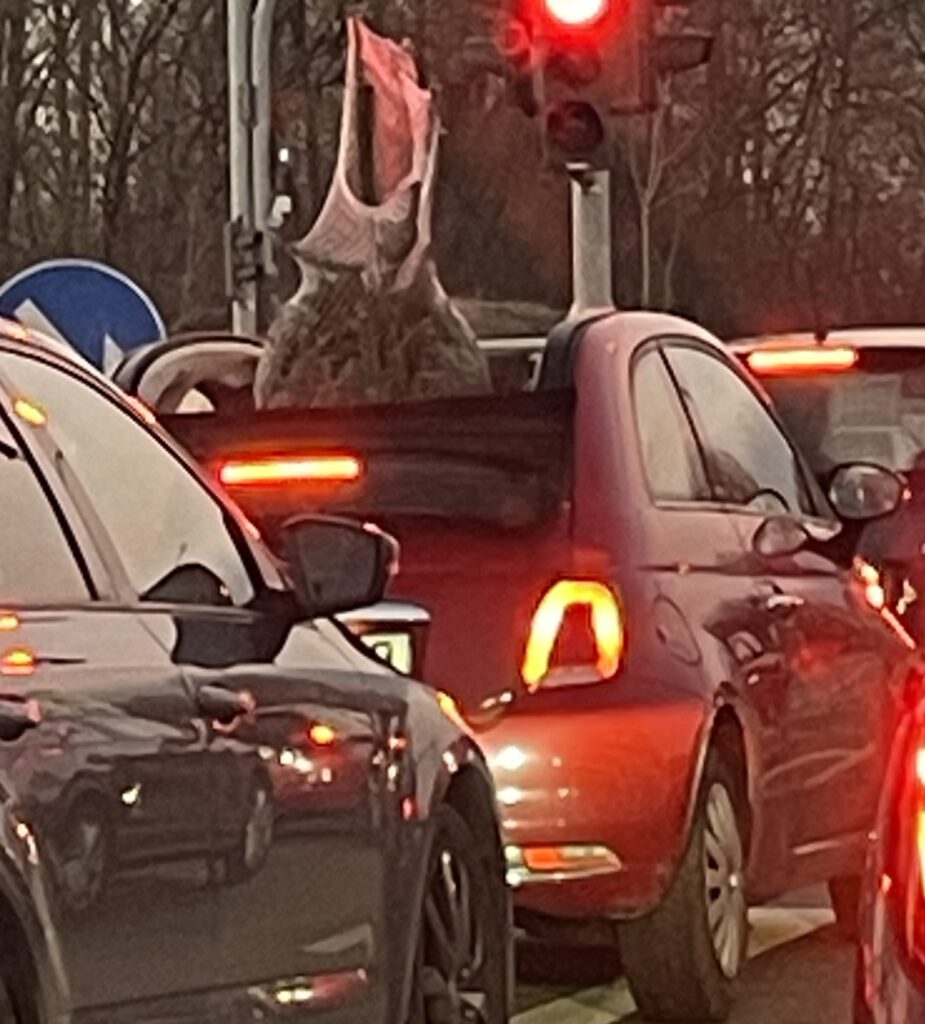The German Patent and Trademark Office provides a nice collection of season-related IP rights: “Santa Claus patents, brands, designs“.
Wishing you all a wonderful christmas!

A companion for your ideas
The German Patent and Trademark Office provides a nice collection of season-related IP rights: “Santa Claus patents, brands, designs“.
Wishing you all a wonderful christmas!

Seen in the Upper Palatinate when visiting my parents (also for Christmas preparations, but without convertible).
Juve Patent has published an interesting article (“Is the UPC trending towards bifurcation, but with a twist?”), which discusses initial trends of how the UPC deals with infringement actions and counterclaims for revocation
The EPO has deployed its Deep Tech Finder tool. The Deep Tech Finder is a tool for finding investment-ready European startups that have patent applications at the EPO.
More information is available at the EPO’s FAQ page.
The EPO’s 10-day-rule will be abandoned from 1 November 2023. A safeguard mechanism will be effective in case a document is received late (more than 7 days late), with the burden of proof in case of disputed notifications being with the EPO. The new regulation applies to documents notified on or after 1 November 2023. See OJ EPO 2023, A29 for more details and some examples.
The recent decisionby the Enlarged Board of Appeal G1/22 and G2/22 has made it easier to demonstrate a valid transfer of priority right. This is good news for patent applicants and patentees who may have struggled with the previous requirements for demonstrating a valid transfer. According to the EPO’s summary of the key considerations, “entitlement to priority is presumed to exist if the formal requirements for claiming priority are fulfilled. This presumption is justified because (i) all parties involved normally have an interest that an application may benefit from a priority right, (ii) there are no formal requirements for the transfer of priority rights, and (iii) the applicant of the priority application has to provide support to the applicant claiming priority (e.g. by providing unpublished documents).”
However, it is important to note that the time of transfer must still pre-date the subsequent filing. This means that while the process of demonstrating a valid transfer may be easier, the timing of the transfer is still crucial. More details can be found in the many comments that were already published on these decisions. See, e.g., the DeltaPatents Blog on decisions G1/22 and G2/22.
The EPO hosts a great hybrid format conference Examination Matters 2023. The event is very interactive and provides lively discussions on topics of practical relevance for patent practitioners (both substantive and procedural). Check out the conference materials once they become available.
The German Federal Supreme Court’s recent decision of August 1, 2023, X ZB 9/21 – Aesthetic treatment (“Ästhetische Behandlung”) relates to the balance of confidentiality interests and effective enforcement of a patent or utility model in independent evidentiary procedures.
An expert opinion was prepared based on an inspection of a potentially infringing product. This Supreme Court decision relates to a first instance court order on the provision of the expert opinion to applicant (i.e., the patent or utility model owner who requested the inspection). The Supreme Court held that such an order is appealable by means of immediate appeal (“sofortige Beschwerde”). According to this Supreme Court decision, immediate appeal is available as a legal remedy also when the first instance court orders that the expert opinion be disclosed to applicant despite the respondent (i.e., the alleged infringer) asserting a confidentiality interest (due to the expert opinion including information on trade secrets).
The Supreme Court also held that the respondent has to actively assert its confidentiality interest even if the Patent Office (here: the GPTO) has already provided a negative preliminary opinion on the validity of the asserted utility model or patent, in order to challenge the provision of the expert opinion to applicant.
The importance of this decision is evidenced by the fact that it will be published in the official collection of decisions of the German Federal Supreme Court (BGHZ).
In order to rely on a prior use right, the holder of the prior use right must have had in its possession an embodiment falling within the scope of the invention claimed in the asserted patent or utility model. Consistent jurisprudence by German courts has held that there are limitations on the modifications that are still covered by the prior use right. Modifications are generally not permissible if they constitute a more severe act of using the invention claimed in the patent or utility model than the original embodiment that was conceived by the prior use rights holder prior to the effective date of the patent or utility model.
A rule of thumb frequently invoked in infringement proceedings is that a modification is generally not permissible within the ambits of the prior use right if the embodiment as modified falls within the scope of a dependent claim of the patent or utility model, while the original embodiment did not. See, e.g., the discussion of the modified embodiment considered in OLG Düsseldorf, decision of 24.6.2021, 2 U 116/05 – Saugfähige Faserstoffbahn (“absorbent fiber web”).
The German Federal Supreme Court held in its recent decision of 20.6.2023, X ZR 61/21 – Faserstoffbahn (“fiber web”) that there are cases in which a modification which implements features of a dependent claim for the first time may still be covered by the prior use right (even though the embodiment as conceived prior to the effective date of the patent or utility model did not implement the features of the dependent claims). More specifically, the German Federal Supreme Court held that this can be the case if (a) the modification is not associated with a particular technical effect discussed in the patent or utility model, or (b) the modification would have been considered by the skilled person as a matter of routine as of the effective date of the patent or utility model.
The German Federal Supreme Court decision “Fasetstoffbahn” also addresses interesting procedural aspects related to specifics of utility model law.
A recent decision of the German Federal Patent Court, 2 Ni 30/21 (EP), which relates to one of Signify’s LED technology patents, is illustrative for claim construction in DE nullity proceedings. Patentee wanted a claim feature (“clipped into”) to be understood broadly (which is unusual in nullity proceedings). The German Federal Patent Court interpreted the feature in question much more narrowly. The German Federal Patent Court held that the patent was to be maintained on the basis of a (significantly limited) independent claim of an auxiliary request.
It was due to the very narrow interpretation of the “clipped into” feature that the German Federal Patent Court held that this feature was not disclosed by some of the prior art document (see, e.g., sections II.7.5, 7.6, 7.7, and 7.8 of the reasons of the decision 2 Ni 30/21 (EP)).
This case illustrates that the German Federal Patent Court may give claims a much narrower meaning than the interpretation suggested by patentee. Signify’s LED technology patents continue to provide interesting case law (with German Federal Supreme Court decision of December 20, 2018 – X ZR 56/17 – Schaltungsanordnung III being a well-known example).